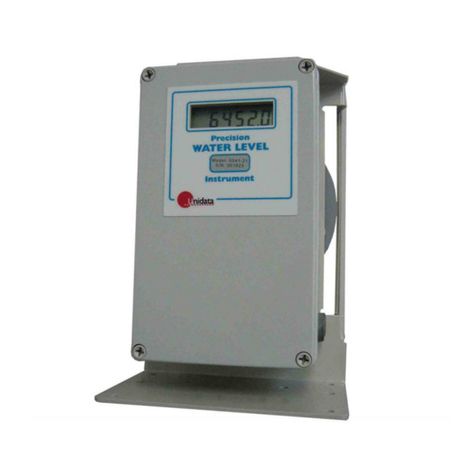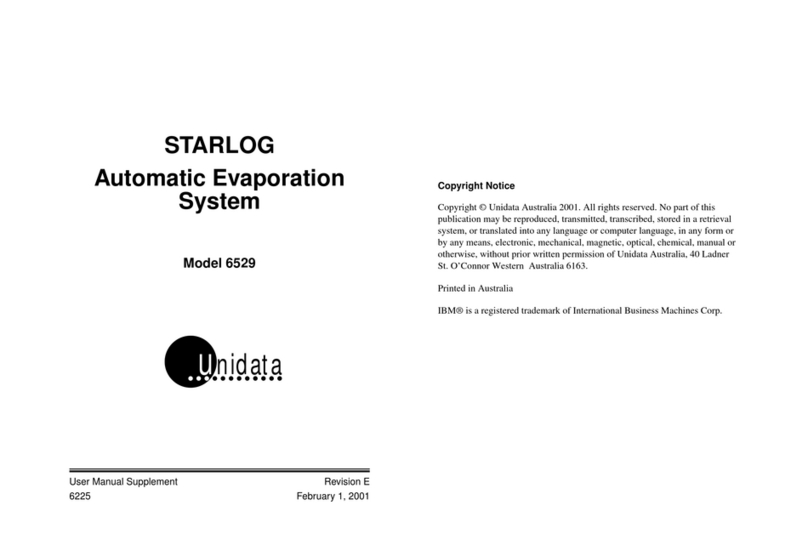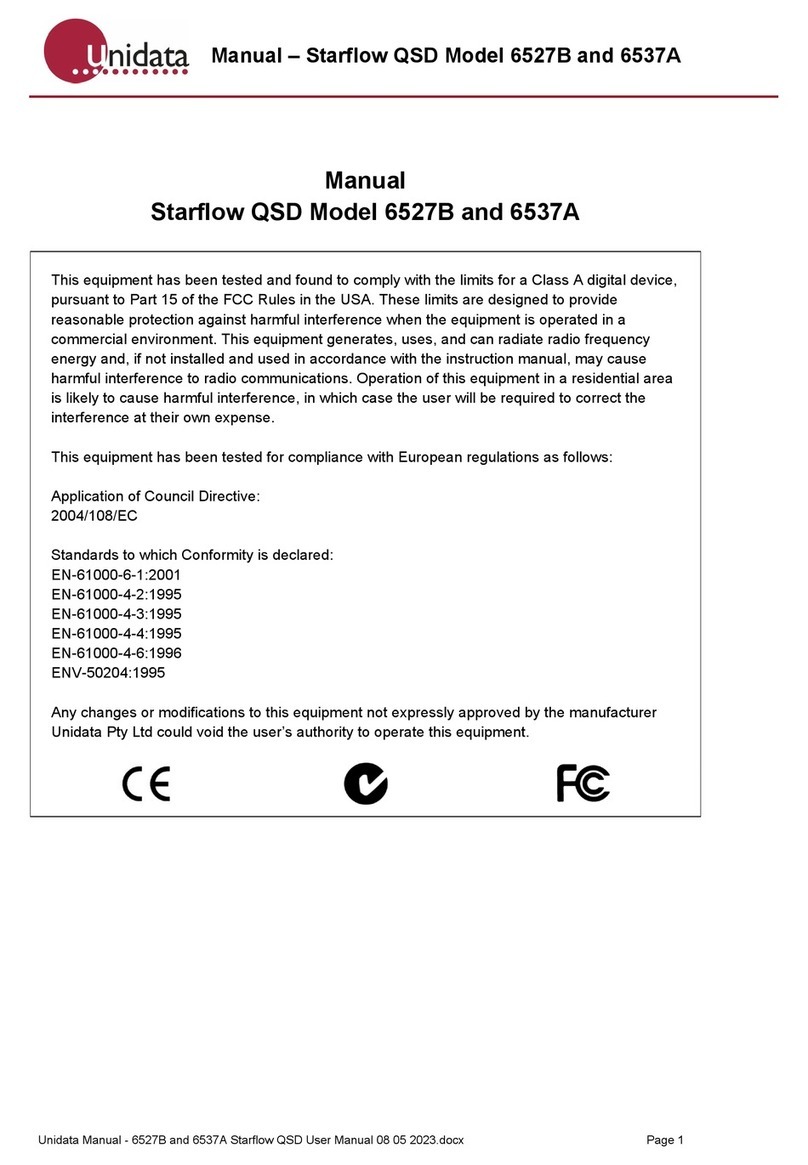
Manual – Starflow QSD Model 6527B and 6537A
Unidata Manual - 6527B and 6537A Starflow QSD User Manual 17 01 2020.docx Contents 1
TABLE OF CONTENTS
1.0 Introduction ........................................................................................................................1
2.0 Specifications.....................................................................................................................3
3.0 Operating Principles & Measured Parameters ................................................................5
3.1 Flow Velocity Measurement .................................................................................. 5
3.2 Water Depth Measurement – Ultrasonic ............................................................... 6
3.3 Water Depth Measurement - Pressure.................................................................. 6
3.4 Temperature.......................................................................................................... 6
3.5 Electrical Conductivity (EC) – 6537A Only ............................................................ 6
3.6 Accelerometer ....................................................................................................... 7
3.7 Power Supply Voltage ........................................................................................... 7
3.8 Signal Spread........................................................................................................ 7
3.9 Received Signal Strength Indicator (RSSI) ........................................................... 7
4.0 Taking Measurements From The Instrument ..........................................................................8
4.1 SDI-12 Operation ........................................................................................................ 8
4.2 Modbus RS485 Operation......................................................................................... 12
5.0 Installation ................................................................................................................................16
5.1 Site Considerations................................................................................................... 16
5.2 Instrument Mounting ................................................................................................. 17
6.0 Configuration - Using The sonic configuration software.....................................................19
6.1 Setup – Connection to Starflow QSD........................................................................ 19
6.2 Settings Starflow QSD .............................................................................................. 21
6.3 Configuration – Configuring Sonic ............................................................................ 25
6.4 Tools – Starflow QSD................................................................................................ 27
7.0 Instrument maintenance .........................................................................................................30
Apendix A - Factors Affecting Flow Measurement Accuracy....................................................31
Alignment with Flow and Depth....................................................................................... 31
Instantaneous Versus “Averaged” Velocity..................................................................... 31
Conversion of Logged to Mean Velocity ......................................................................... 31
The Speed of Sound in Water......................................................................................... 32






























